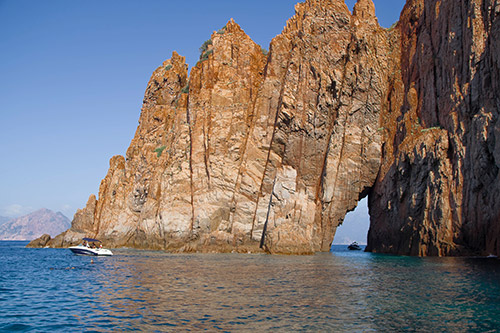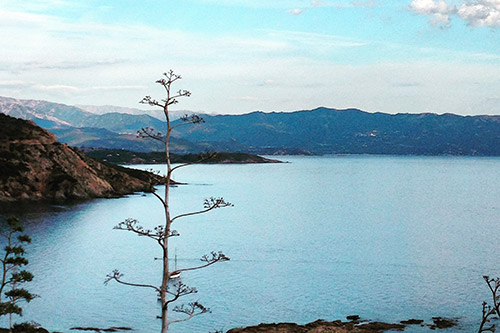Porto is a hamlet in the village of Ota, which is located a little further up the valley. At the mouth of the river is the pebble beach of the gulf and the village. There are a few hotels and restaurants, and a Genoese tower. It is one of the only ones on the island to have been built in a square shape during the 16th century. The tower is open from April to September. The port of Porto is also the main departure point for boat excursions to the Calanches de Piana or the Scandola reserve, listed as a UNESCO World Heritage Site.
During its history, Ota was the most populated and developed area of the village. Away from the shore to protect itself from invaders, its main activity was agriculture. We can still find traces today, with the presence of foothills towards Evisa. We also see the old mule tracks, the communication axes of the time which linked the villages of the valley.
Perched at an altitude of 850 meters, Evisa is located on the edge of the Aïtone forest. The village is popular with hikers because it is a stopping place for the Mare e Moti and the starting/finishing point for the Mare a Mare Nord which crosses the island from east to west. After crossing the village, the road continues towards the Col de Vergio which passes through the Aïtone forest. In winter a cross-country ski area is open and during the summer period, the “Aitone swimming pools” are appreciated by tourists and locals. On the other side of the pass, we arrive in the Niolo valley.
North of the Gulf of Porto, on the D81 towards Calvi, we arrive at Bussaglia beach. It offers bathers a view of the Capu d’Ortu. Returning to the D81, we reach the village of Partinello and its bay of Caspiu 3km further down. For families, Gratelle beach, 5km further, is more suitable for children, because the waves are lower. Above the village of Osani, the Col de la Croix is the starting point for hikes in the region. , and in particular towards the village of Girolata. The latter is only accessible by foot, for 3 hours round trip, or by sea. The walking trails towards Punta Castellacciu and a little further on Monte Senino offer hikers a magnificent view of the Gulf of Porto and Girolata. The Scandola nature reserve can only be visited by boat, from Calvi or Port. The site has been under legal protection since 1975, due to its landscapes but also its fauna. The last pairs of ospreys on the island are located within the reserve. The site is also listed as a UNESCO World Heritage Site. The D81 continues towards the Col de la Palmarella and Galéria.



